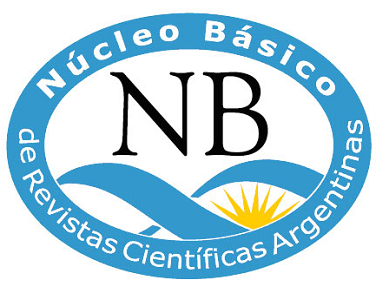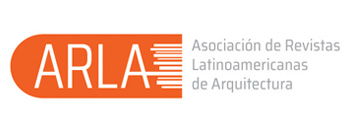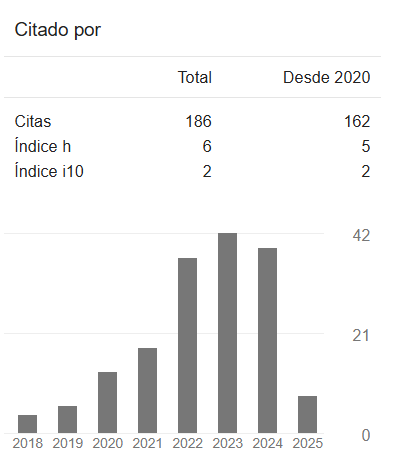Haussmannization in the tropics
Abject urbanism and infrastructural violence in urban Nicaragua
DOI:
https://doi.org/10.35305/23626097v12i22.521Downloads
Metrics
References
Babb, F. E. (1999). ‘Managua is Nicaragua’: The Making of a Neoliberal City. City & Society, 11(1/2), 27-48.
Báez Cortés, J. F. (2006). The problem isn’t lack of resources; it’s fiscal inequity and legalized pillage. Envío in English, 296. Disponible en: http://www.envio.org.ni/articulo/3224.
Benjamin, W. (1999). The Arcades Project. Cambridge, Estados Unidos: Harvard University Press.
Bennett, J. (2005). The Agency of Assemblages and the North American Blackout. Public Culture, 17(3), 445-66.
Berman, M. (1982). All that is Solid Melts into the Air: The Experience of Modernity. Nueva York, Estados Unidos: Penguin.
Chamorro, C. F. (2002). Edifico Pellas fue exonerado de 15% IGV. Confidencial, 288. Disponible en: http://www.confidencial.com.ni/2002-288/deportada1-288.html.
Christiansen, R. (1994). Paris, Babylon: The Story of the Paris Commune. Nueva York, Estados Unidos: Penguin.
Duffy, L. (2005). Le Grand Transit Moderne: Mobility, Modernity and French Naturalist Fiction. Amsterdam, Holanda: Rodopi B. V.
Elias, N. (2000). The Civilizing Process. Oxford, Reino Unido: Blackwell.
Ferguson, J. (1999). Expectations of Modernity: Myths and Meanings of Urban Life on the Zambian Copperbelt. Berkeley, Estados Unidos: University of California Press.
Freeman, J. (2010). From the little tree, half a block toward the lake: Popular geography and symbolic discontent in post-Sandinista Managua. Antipode, 42(2), 336-73.
Graham, S. (2006). Urban metabolism as target: Contemporary war as forced demodernization. En N. Heynen, M. Kaika, y E. Swyngedouw (eds.), In the Nature of Cities: Urban Political Ecology and the Politics of Urban Metabolism (pp 245-65). Londres, Reino Unido: Routledge.
Graham, S. (2010). Disrupted Cities: When Infrastructure Fails. Londres, Reino Unido: Routledge.
Hannerz, U. (1980). Exploring the City: Inquiries toward an Urban Anthropology. Nueva York, USA: Columbia University Press.
Harvey, D. (2003). Paris: Capital of Modernity. London, UK: Routledge.
Harvey, D. (2006). The political economy of public space. En S. M. Low y N. Smith (eds.), The Politics of Public Space (pp 17–34). Londres, Reino Unido: Routledge.
Haussmann, G.-E. (2000). Mémoires. Paris, Francia: Seuil.
Herbst, J. (2000). State and Power in Africa: Comparative Lessons in Authority and Control. Princeton, Estados Unidos: Princeton University Press.
Jordan, D. P. (1995). Transforming Paris: The Life and Labors of Baron Haussmann. Nueva York, Estados Unidos: The Free Press.
Katz, C. (2007). Banal terrorism: Spatial fetishism and everyday insecurity. En D. Gregory y A. Pred (eds), Violent Geographies: Fear, Terror and Political Violence (pp. 349-61). Nueva York, Estados Unidos: Routledge.
Leonardi, R. (2001). Nicaragua Handbook. Bath, UK: Footprint Handbooks.
Mann M. (1984). The autonomous power of the state: its origins, mechanisms and results. Archives Européenes de Sociologie, 25, 185-213.
Mann, M. (2008). Infrastructural power revisited. Studies in Comparative International Development, 43(3-4), 355-65.
McFarlane, C., y J. Rutherford. (2008). Political infrastructures: Governing and experiencing the fabric of the city. International Journal of Urban and Regional Research, 32(2), 363–74.
Merrifield, A. (2002). Metromarxism: A Marxist Tale of the City. Nueva York, Estados Unidos: Routledge.
Pinkney, D. (1958). Napoleon III and the Rebuilding of Paris. Princeton, Estados Unidos: Princeton University Press.
Rice, S. (1997). Parisian Views. Cambridge, USA: The MIT Press.
Rodgers, D. (2004). Disembedding the city: Crime, insecurity, and spatial organisation in Managua, Nicaragua. Environment and Urbanization, 16(2), 113-24.
Rodgers, D. (2008a). A symptom called Managua. New Left Review, 49, 103-20.
Rodgers, D. (2008b). Searching for the time of beautiful madness: Of ruins and revolution in post-Sandinista Nicaragua. En H. West y P. Raman (eds.), Enduring Socialism: Explorations of Revolution and Transformation, Restoration and Continuation (pp. 77-102). Oxford, Reino Unido: Berghahn Books.
Rodgers, D. (2011). An illness called Managua: Urbanisation and ‘mal-development’ in Nicaragua. En T. Edensor & M. Jayne (eds.), A World of Cities: Urban Theory beyond the West. Londres, Reino Unido: Routledge.
Scheper-Hughes, N., y P. Bourgois. (2004). Introduction: Making Sense of Violence. En N. Scheper-Hughes y P. Bourgois (eds.), Violence in War and Peace: An Anthology (pp. 1-27). Oxford, Reino Unido: Blackwell.
Scott, J. (1998). Seeing Like a State: How Certain Schemes to Improve the Human Condition Have Failed. New Haven, USA: Yale University Press.
Star, S. L. (1999). The ethnography of infrastructure. American Behavioral Scientist, 43(3), 377-91.
Wall, D. L. (1996). City profile: Managua. Cities, 13(1), 45-52.
Whisnant, D. E. (1995). Rascally Signs in Sacred Places: The Politics of Culture in Nicaragua. Chapel Hill, USA: University of North Carolina Press.
Wirth, L. (1938). Urbanism as a Way of Life. American Journal of Sociology, 44(1), 1-24.

Published
How to Cite
Issue
Section
License
Copyright (c) 2025 A&P Continuidad

This work is licensed under a Creative Commons Attribution-NonCommercial-ShareAlike 4.0 International License.
Open access policy
A&P Continuidad is a non-profit and open access publication. According to Mexico Declaration on Cultural Policies, the journal distribution is submitted to Creative Commons Attribution-Noncommercial-ShareAlike 4.0 International Public License (CC BY-NC-SA). “Neither the commercial use of the original work nor that of the possible derivative works are allowed. The distribution of derivative works should be submitted to the license regulating the original work. This license is not free.”
A&P Continuidad authorizes the partial or full reproduction of texts and graphs provided that the source is cited. Authors are exclusively responsible for the criteria expressed in the articles which do not necessarily reflect the opinion of the Editorial Committee or that of the Direction Board. The copyright of the published articles pertains to their authors or publishers.
Transfer of rights
The acceptance of an article to be published implies the author’s transfer of rights to the journal. Authors continue to have the right to use the material in future books or publications, approve or veto the republication of their works as well as the rights related to patents or other rights. Transfer of rights form may be downloaded here.





























 This OJS site and its metadata are under a
This OJS site and its metadata are under a 

